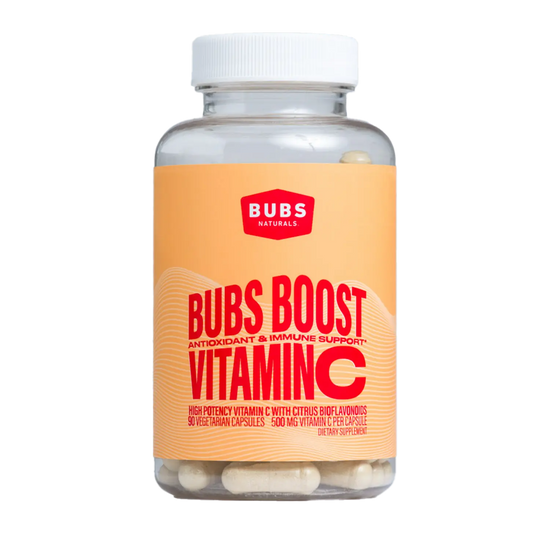Table of Contents
Tomatoes are a staple in many kitchens around the world, cherished not only for their bright color and juicy flavor but also for their nutritional benefits. But how many of us have stopped to wonder, "Are tomatoes a good source of vitamin C?" If you’re looking to enhance your diet with nutrient-rich foods, the answer may surprise you.
In this blog post, we’ll dive deep into the world of tomatoes, examining their vitamin C content and exploring the health benefits they offer. We’ll cover their nutritional profile, compare them to other vitamin C sources, and discuss versatile ways to incorporate them into our meals. By the end of this read, you’ll have a comprehensive understanding of how tomatoes can fit into a healthy lifestyle and support your wellness goals.
Introduction
When life gives you tomatoes, you might be thinking of delicious salsa, hearty tomato sauce, or a refreshing salad. However, in addition to these culinary delights, is there a health boost packed into that humble fruit? It turns out there is!
Vitamin C, also known as ascorbic acid, plays a crucial role in our body. As a powerful antioxidant, it helps neutralize free radicals, supports immune function, and aids in the synthesis of collagen—a vital protein for our skin, muscles, and blood vessels. The average adult should aim for around 75 to 90 mg of vitamin C daily, depending on their age and lifestyle.
While citrus fruits traditionally steal the spotlight for their vitamin C content, tomatoes can surprise us. They provide other vital nutrients "under the radar" of common perception. In this post, we will explore how many tomatoes we need to meet our vitamin C requirements and what other nutrients they bring to our plates.
Ultimately, let's peel back the layers and uncover why tomatoes deserve a prominent place on our plates—not only for their flavor but also for the wealth of nutrients they offer to support an active and adventurous life.
The Nutritional Profile of Tomatoes
Before we dive headfirst into the specifics of vitamin C content, it's essential to understand the overall nutritional profile of tomatoes. A medium-sized raw tomato typically provides:
- Calories: 18
- Water: 95%
- Protein: 0.9 grams
- Carbohydrates: 3.9 grams
- Sugars: 2.6 grams
- Fiber: 1.2 grams
- Fat: 0.2 grams
Vitamins and Minerals
Tomatoes are a low-calorie source of several crucial vitamins and minerals, including:
- Vitamin C: A medium raw tomato can provide approximately 17 mg of vitamin C, around 18% of your daily value.
- Potassium: Important for heart health, one medium tomato contains about 292 mg of potassium.
- Vitamin K: Essential for bone health and blood clotting, it provides about 12% of the daily value.
- Folate: Vital for DNA synthesis and repair, offering about 4% of the daily value.
Tomatoes are not only low in calories, but they also boast a long list of other beneficial compounds. They contain antioxidants like lycopene, which has been linked to various health benefits.
Vitamin C Content in Tomatoes
So, how do tomatoes stack up when it comes to vitamin C? While they may not compete with oranges (where one medium orange contains about 70 mg), they still hold their own in the vitamin arena:
- Raw Tomatoes: A medium-sized raw tomato lends approximately 17 mg of vitamin C.
- Cooked Tomatoes: Interestingly, cooking tomatoes can decrease their vitamin C content slightly but increases the availability of beneficial lycopene.
Although tomatoes may not deliver the highest vitamin C content compared to other foods like bell peppers or kiwis, their contribution shouldn't be overlooked. Consumed alongside a varied diet rich in fruits and vegetables, they can play a supportive role in meeting our dietary needs.
Comparison with Other Dietary Sources of Vitamin C
To fully appreciate the value of tomatoes as a source of vitamin C, it’s helpful to compare them with other common sources of this essential nutrient:
- Oranges: 70-90 mg of vitamin C in one medium fruit.
- Kiwifruit: Approximately 64 mg per medium fruit.
- Red bell peppers: Contain about 95 mg per ½ cup, raw.
- Broccoli: Provides about 51 mg of vitamin C per ½ cup, cooked.
As you can see, while tomatoes may not top the vitamin C charts, they still offer a respectable amount and can contribute valuable nutrients to our overall diet, especially when enjoyed in diverse recipes.
Health Benefits of Tomatoes Beyond Vitamin C
Tomatoes are not only good for their vitamin C content; they come packed with additional health benefits:
- Heart Health: The antioxidants in tomatoes, especially lycopene, have been shown to enhance heart health by reducing cholesterol levels and blood pressure.
- Cancer Prevention: Lycopene has also been linked to a lower risk of certain types of cancers, including prostate cancer.
- Bone Health: With their vitamin K content, tomatoes support bone mineralization.
- Skin Health: The vitamin A and antioxidants present in tomatoes may contribute to better skin health and protection from sun damage.
Incorporating tomatoes into your diet doesn’t only help meet vitamin C needs but also supports a myriad of other essential functions for our body.
Creative Ways to Enjoy Tomatoes
Now that we know tomatoes are not just a source of vitamin C and other nutrients, the next logical question is how can we incorporate them into our meals? Here are some delicious and wholesome ways to enjoy tomatoes:
Fresh and Raw
- Salsa: Combine chopped tomatoes with onions, cilantro, lime, and jalapeños for a zesty salsa, which can accompany grilled meats or tortilla chips.
- Salad: Toss fresh tomatoes with greens, avocados, and a light vinaigrette to make a refreshing salad.
- Caprese Stack: Layer slices of fresh mozzarella, tomatoes, and basil, drizzled with balsamic glaze for a classic appetizer.
Cooked and Sauced
- Tomato Sauce: Simmer crushed tomatoes with herbs and garlic to create a flavorful sauce for pasta or pizza. Remember that cooking can enhance the lycopene levels in tomatoes!
- Roasted Tomatoes: Roast entire or halved tomatoes with olive oil, salt, and pepper for a delicious side dish that intensifies their natural sweetness.
- Stuffed Tomatoes: Hollow out large tomatoes and fill them with a mixture of quinoa, vegetables, and cheese, followed by baking.
Soups and Stews
- Tomato Soup: Cook down tomatoes with onions, garlic, and herbs for a comforting homemade tomato soup.
- Gumbo or Chilli: Add diced tomatoes or tomato products to enhance the flavor of stews and soups.
Dry and Preserve
- Sun-Dried Tomatoes: These can be added to salads, pasta, or on top of pizzas to bring a rich, umami flavor.
- Tomato Paste: A concentrated way to enhance many recipes, particularly sauces.
Embracing creativity in the kitchen not only helps keep meals exciting but also maximizes the nutritional benefits from tomatoes every step of the way.
Conclusion
In summary, tomatoes indeed serve as a good source of vitamin C, among many other nutrients. While they might not hold the top spot compared to other fruits and vegetables known for their vitamin C content, they bring a wealth of additional health benefits and flavors that make them a fantastic addition to a balanced diet.
From supporting heart health to adding richness to our meals, tomatoes are invaluable in our kitchens. As we explore various cooking methods and recipes, we can easily unlock the potential of this versatile fruit and reap the rewards of enhanced nutrition. Remember to mix up your fruits and vegetables and embrace the potential of tomatoes—I think you might find they're more than just a side player in your health journey!
FAQ
1. How much vitamin C is in a tomato? A medium-sized raw tomato provides about 17 mg of vitamin C, which is around 18% of the recommended daily value.
2. Does cooking tomatoes reduce their vitamin C content? Yes, cooking tomatoes can reduce some of their vitamin C. However, cooking can also enhance the availability of lycopene, an antioxidant linked to several health benefits.
3. Are there any health benefits associated with eating tomatoes? Absolutely! Tomatoes are good for heart health, may offer protection against certain cancers, and contribute to good skin health. They also provide potassium and folate.
4. How can I incorporate tomatoes into my meals? Tomatoes can be enjoyed fresh in salads, used to make salsa or sauces, roasted, or even dried. They're versatile and can enhance a variety of dishes.
5. Can I get enough vitamin C from tomatoes alone? While tomatoes are a good source of vitamin C, it's best to consume a variety of fruits and vegetables to meet daily vitamin C needs effectively.
Written by:
Bubs Naturals

Vitamin C
Starts at $20.00
Shop

